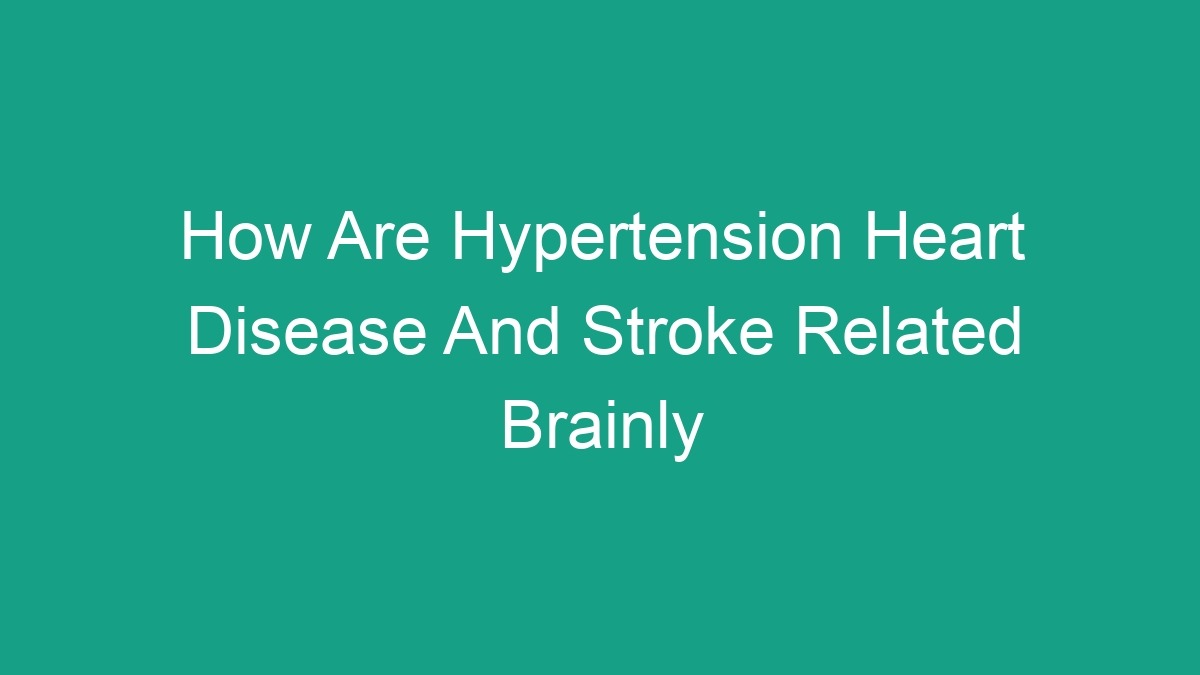
Hypertension, also known as high blood pressure, is a common condition that affects millions of people worldwide. It is a significant risk factor for developing heart disease and stroke. In this article, we will explore the intricate connection between hypertension, heart disease, and stroke, and how these conditions contribute to each other.
The Role of Hypertension in Heart Disease
Hypertension is a major risk factor for heart disease. When blood pressure is consistently high, it puts extra strain on the heart and blood vessels. Over time, this can lead to atherosclerosis, a condition where the arteries become narrowed and hardened due to the buildup of plaque. Atherosclerosis restricts blood flow to the heart, increasing the risk of heart attacks, angina, and other cardiovascular complications.
The Connection Between Hypertension and Stroke
Hypertension is the most important modifiable risk factor for stroke. High blood pressure can weaken and damage the blood vessels in the brain, making them more susceptible to rupture or blockage. When a blood vessel bursts in the brain (hemorrhagic stroke) or becomes blocked by a blood clot (ischemic stroke), it can lead to serious, potentially life-threatening consequences.
The Mechanisms Linking Hypertension, Heart Disease, and Stroke
Several mechanisms underlie the relationship between hypertension, heart disease, and stroke:
- Endothelial dysfunction: Elevated blood pressure can cause damage to the endothelium, the inner lining of blood vessels, contributing to the development of atherosclerosis and increasing the risk of heart disease and stroke.
- Increased clotting tendencies: Hypertension can promote the formation of blood clots, which can lead to heart attacks and strokes when they occlude the blood vessels supplying the heart or brain.
- Heart failure: Chronic hypertension can lead to the thickening and enlargement of the heart muscle, increasing the risk of heart failure, a condition where the heart cannot pump blood effectively, leading to fluid buildup and cardiovascular complications.
- Renal damage: Long-standing hypertension can damage the kidneys, leading to the retention of salt and water, exacerbating blood pressure elevation, and promoting cardiovascular disease.
Preventive Measures and Treatment Strategies
Given the strong link between hypertension, heart disease, and stroke, it is crucial to actively manage blood pressure to reduce the risk of these conditions. Here are some preventive measures and treatment strategies that can help mitigate the impact of hypertension on heart health and stroke risk:
- Healthy lifestyle modifications: Adopting a balanced diet, engaging in regular exercise, maintaining a healthy weight, limiting alcohol consumption, and avoiding tobacco can help control blood pressure and reduce the risk of heart disease and stroke.
- Medication therapy: Many effective antihypertensive medications are available to lower blood pressure and protect against the development of heart disease and stroke. These may include ACE inhibitors, beta-blockers, diuretics, calcium channel blockers, and other classes of drugs.
- Regular monitoring: Routine blood pressure checks and cardiovascular assessments are essential for early detection and management of hypertension, as well as the prevention of associated complications.
- Comprehensive care: Patients with hypertension should receive comprehensive care that addresses not only blood pressure control but also the management of other cardiovascular risk factors, such as cholesterol levels, diabetes, and lifestyle habits.
Takeaway
The close relationship between hypertension, heart disease, and stroke highlights the importance of proactive management of high blood pressure. By addressing hypertension early and effectively, individuals can significantly reduce their risk of developing heart disease and stroke, ultimately leading to better heart and brain health.



